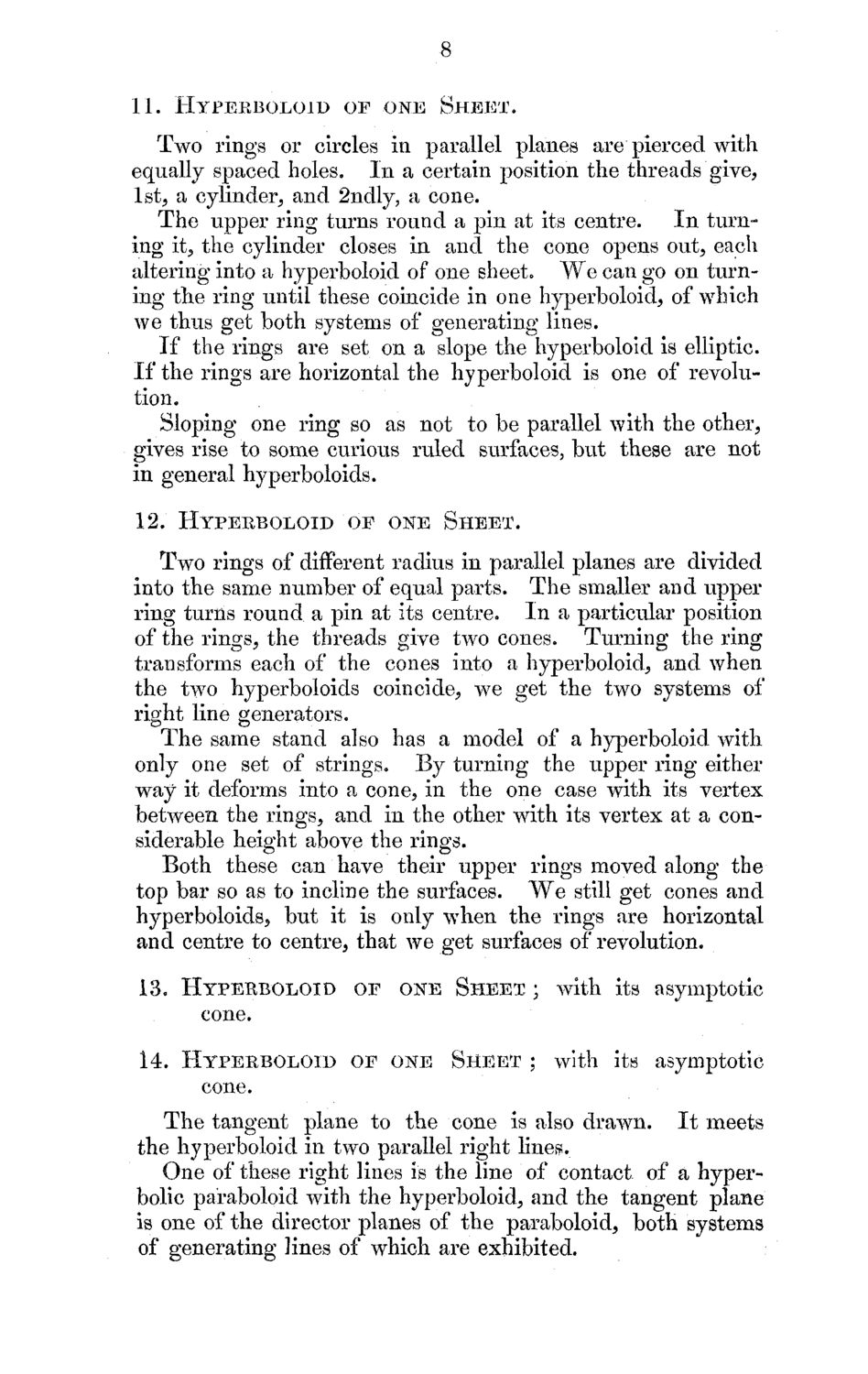| |
| |
Caption: Mathematical Models Catalog of a Collection of Models of Ruled Surfaces
This is a reduced-resolution page image for fast online browsing.

EXTRACTED TEXT FROM PAGE:
8 11. Hyperboloid of one Sheet. Two rings or circles in parallel planes are pierced with equally spaced holes. In a certain position the threads give, 1st, a cylinder, and 2nclly, a cone. T h e upper ring turns round a pin at its centre. In turning it, the cylinder closes in and the cone opens out, each altering into a hyperboloid of one sheet. W e can go on turning the ring until these coincide in one hyperboloid, of which w e thus get both systems of generating lines. If the rings are set on a slope the hyperboloid is elliptic. If the rings are horizontal the hyperboloid is one of revolution. Sloping one ring so as not to be parallel with the other, gives rise to some curious ruled surfaces, but these are not in general hyperboloids. 12. Hyperboloid of one Sheet. Two rings of different radius in parallel planes are divided into the same number of equal parts. T h e smaller and upper ring turns round a pin at its centre. In a particular position of the rings, the threads give two cones. Turning the ring transforms each of the cones into a hyperboloid, and when the two hyperboloids coincide, w e get the two systems of right line generators. T h e same stand also has a model of a hyperboloid with only one set of strings. B y turning the ripper ring either w a y it deforms into a cone, in the one case with its vertex between the rings, and in the other with its vertex at a considerable height above the rings. Both these can have their upper rings moved along the top bar so as to incline the surfaces. W e still get cones and hyperboloids, but it is only w h e n the rings are horizontal and centre to centre, that w e get surfaces of revolution. 13. Hyperboloid of one Sheet ; with its asymptotic cone. 14. Hyperboloid of one Sheet ; with its asymptotic cone. T h e tangent plane to the cone is also drawn. It meets the hyperboloid in two parallel right lines. O n e of these right lines is the line of contact of a hyperbolic paraboloid with the hyperboloid, and the tangent plane is one of the director planes of the paraboloid, both systems of generating lines of which are exhibited.
| |